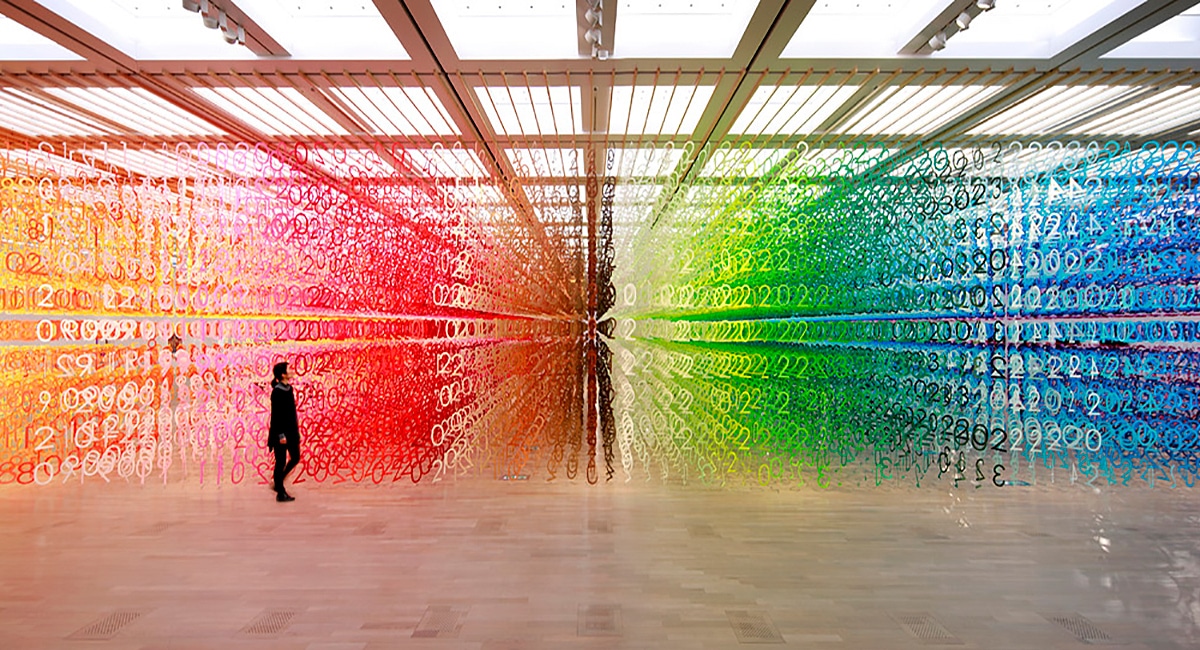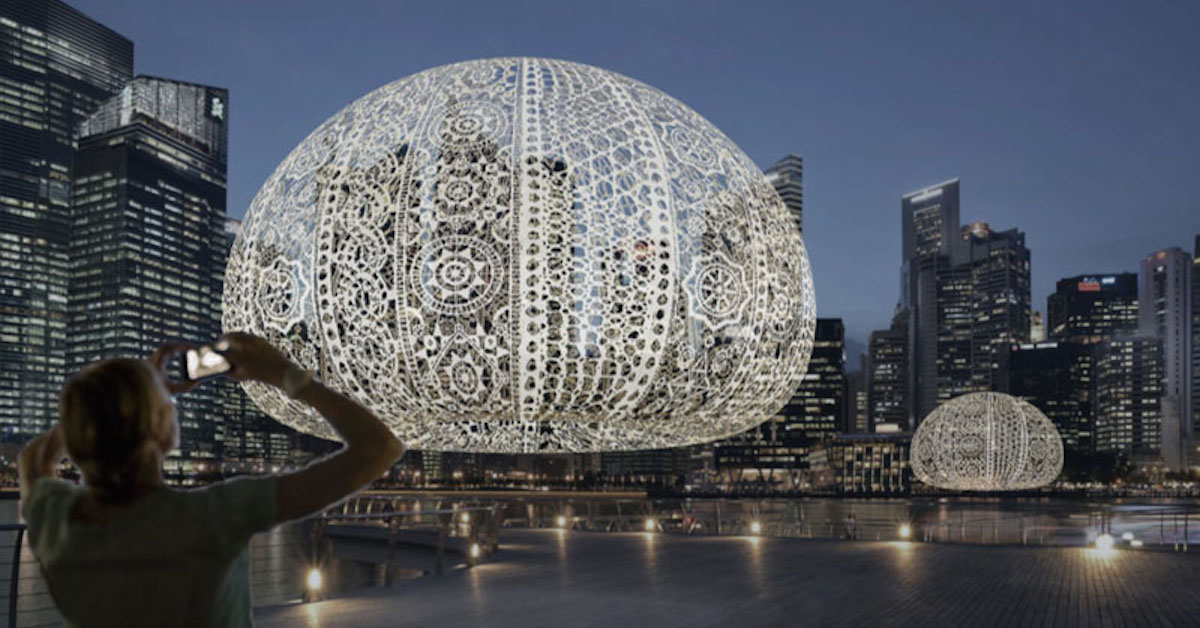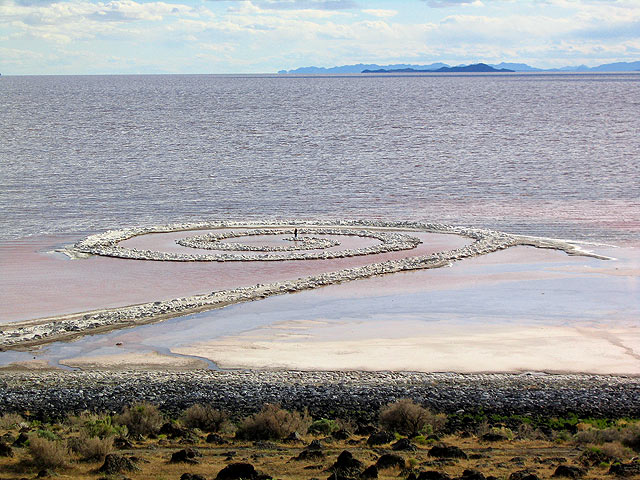
Installation
Art as a creative form can take several forms - from miniatures paintings to giant, larger-than-life paintings and sculptures. Installation art is one such art style, which involves creating giant, larger-than-life works of art. Usually, installation artworks are created by artists keeping in mind a specific location, so that they can be assembled or erected at the location itself. By doing this, the artists attempt to convert that open space into a customized, interactive environment. These installations may be either temporary or permanent.
What is Installation Art?
Like most of the contemporary art movements, Installation art is a very innovative art form. Installation is an artistic genre of 3 Dimensional artworks that are created by artists keeping in mind an open space, intending to transform the perception of the space.
The term is quite similar to Public art. Most people use these two terms interchangeably and sometimes rightfully so because at times these terms overlap each other. But generally speaking, while public art (also called land art) is applied to exterior locations, the term installation art is also used to refer to interior spaces.
Installation Art also shares a striking similarity with sculpture and is associated with a range of recent artistic genres. This immersive art offers a unique way for artists and viewers to create and experience art. The artists enjoy creating art and engaging the audiences, while the audiences enjoy having new experiences.
Like many contemporary art genres, the installation art form is rooted in several different
art movements, such as Dada, conceptualism, and performance art.
Origin of Installation Art:
The history of Installation Art is very old, though it came into prominence, quite late, around the 1970s. The first use of installation art was done by famous artist Marcel Duchamp when he made use of readymade art objects, avoiding the traditional craft-based sculpture. This was a radical departure from the traditional sculptor, which focuses more on the form.
With time, installation art became quite popular. Installation artworks were constructed in various exhibition spaces such as art galleries, museums, and even in public and private spaces.
Modern Examples of Installation Art:
In recent times, several arts collecting people and organizations organized exhibitions and created environments, which realistically portrayed nature, to whatever extent it was possible. This included agencies like Exhibition Lab at New York's American Museum of Natural History and entertainment giants like Walt Disney. Walt Disney Imagineering, while designing the multiple immersive spaces for Disneyland in 1955 made use of the same thought process of trying to offer a real environment to its patrons. Now Installation art has been accepted by the art community, as a separate discipline altogether. This acceptance has acted as a catalyst in the growth of several institutes, which focus on teaching and practising installation art were created. The notable ones are institutes like the Mattress Factory, Pittsburgh, the Museum of Installation in London, and the Fairy Doors of Ann Arbor, MI, among others.

Forest of Numbers by Emmanuelle Moureaux

The Urchins by Choi+Shine Architects
Characteristics of Installation:
Before we get to understand the significance of Installation as an art movement, it is important to understand what makes it so special. Given below is a list of its characteristics, ranging from its distinctive qualities to its artistic influences, which make it an unforgettable experience for the artists and the viewers.
- Immersive Art: Though most artistic mediums can immerse the audience, no other medium can do it better than installation art. It allows the viewers and the art to physically interact with each other. It also allows different people to view art from new and different perspectives.
- Large Scale: Since the installation art is displayed in an open space and is interactive, they are mostly larger than life. Their huge size attracts the viewers and helps them get immersed in art. In many cases, the viewers can even touch, feel and walk through the art. This capability is not seen in other traditional art forms.
- Site-Specific: Unlike paintings, sculptures, and other works of art, installation art is planned with a specific site in mind. Since the viewers can touch and feel the art and may be installed in open space, artists use materials that can withstand human and weather elements.
- Use of Materials: Installation art, as an art genre includes a wide range of materials, which are easily found around us in daily life. These materials are chosen for their durability as well as their ability to ‘evoke’ the desired qualities.
- Use of Mixed media: The installation art makes good use of several latest media, such as light, sound, video, internet among others. All these put together to give the viewer a unique experience.

Spiral Jetty by Robert Smithson 1938-1973 (Transferred from en.wikipedia to Commons.) [Public domain or CC BY-SA 2.5], via Wikimedia Commons
Conclusion:
The term ‘installation art is used to describe a construction conceived for a specific space occupying an entire gallery or room. The art may be for short term or permanent use, may vary in scale and size and can be constructed in exhibition spaces of public or private spaces inviting the viewer to physically enter with an almost theatrical immersion, as it appeals not only to the sense of sight but also to those of hearing and smell. Installation art, therefore, differs from traditional media like painting and sculpture as it addresses the viewer directly as an embodied presence in the space. Its influences have been diverse: architecture, cinema, performance art, sculpture along with various art movements due to which a chronological approach to installation art becomes difficult. In 1917, Marcel Duchamp signed a urinal and placed it in the gallery as the Fountain. By the 60s it was a recognizable art form, and the 70s and 80s saw the rise of the art form properly when artists challenged notions of high art, exhibition space and quality, limitations of making and viewing such art, and the collectable art object.
